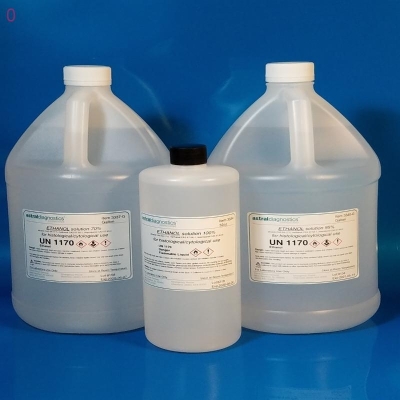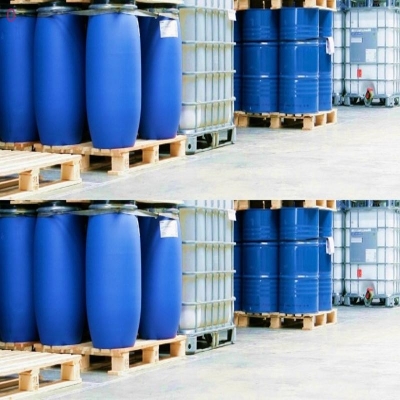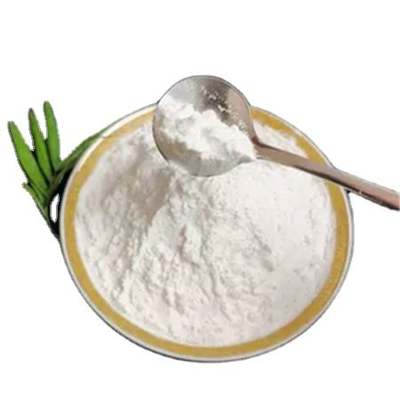-
Categories
-
Pharmaceutical Intermediates
-
Active Pharmaceutical Ingredients
-
Food Additives
- Industrial Coatings
- Agrochemicals
- Dyes and Pigments
- Surfactant
- Flavors and Fragrances
- Chemical Reagents
- Catalyst and Auxiliary
- Natural Products
- Inorganic Chemistry
-
Organic Chemistry
-
Biochemical Engineering
- Analytical Chemistry
- Cosmetic Ingredient
-
Pharmaceutical Intermediates
Promotion
ECHEMI Mall
Wholesale
Weekly Price
Exhibition
News
-
Trade Service
With lithium-ion batteries limited by the shortage of upstream lithium resources and high prices, many companies in the industrial chain have set their sights on the field of sodium-ion batteries, and related capital has flocked to the market, and sodium-ion batteries have entered a period
of industrialization.
Some insiders predict that 2023 will become the first year of industrialization of
sodium-ion batteries.
The layout of sodium battery projects has been accelerated
At present, a large number of enterprises in China have entered the field of sodium-ion batteries, such as CATL, Zhongke Haina, Huayang Co.
, Ltd.
, Qicai Chemical, Meilian New Material, Zhenhua New Material, Polyfluoride, Shanshan Co.
, Ltd.
, Weiyuan Co.
, Ltd.
, etc
.
In fact, sodium-ion batteries showed signs of heat as early as last year, and they were more obvious
in the second half of this year.
"The high price of lithium makes sodium-ion batteries have a higher profit potential than lithium-ion batteries, which is the main reason for
the hot sodium-ion battery industry.
" Moke, chief analyst of true lithium research, said
.
It is reported that lithium prices have continued to rise since last year, with the Australian lithium mine leader Pilbara Minerals on November 16 this year a new round of lithium concentrate auction bidding of 7804 US dollars (ton price, the same below), China's lithium price has also ushered in a historical high
.
On the same day, the average mixed price of battery-grade lithium carbonate in China was 604,000 yuan, and the average mixed price of industrial-grade lithium carbonate was 587,000 yuan
.
In this regard, Han Junying, managing director of Wan Venture Capital Bank, said that lithium-ion batteries are currently a more mature category in the battery industry, but due to the insufficient supply of lithium resources, lithium prices continue to rise, and related companies have turned to the sodium-ion battery industry
with better safety performance and higher cost performance.
Han Junying further explained: "At present, about 71% of China's lithium resources rely on imports, in contrast, sodium-ion batteries do not have the problem
of limited upstream resources.
At the same time, affected by the introduction of the US energy law this year, the production of Australian mines is less than expected, and the uncontrollable overseas lithium resources, whether from the perspective of national energy security or the company's own development, sodium-ion batteries are the best choice
for enterprises to find new development paths.
”
Moke believes that another reason why companies are actively entering the field of sodium-ion batteries is that sodium-ion batteries have the feasibility
of large-scale supply.
"With the development of the sodium-ion battery industry for decades, its technology has continuously achieved breakthroughs and its comprehensive performance has been improved
.
At the same time, traditional lithium battery manufacturers have a first-mover advantage
in production lines.
Since sodium-ion batteries and lithium-ion batteries have the same principle, and the two have consistency in production equipment and processes, the lithium-ion battery production line can be switched to a sodium-ion battery production line
after basic debugging.
Han Joon-young added
.
The prospects for industrialization are gradually clear
"Industrialization requires three major conditions
: stable and reliable product performance, strong and continuous supply capacity and good economy.
At present, the sodium-ion battery industry is still in the first step of industrial chain construction, and it is necessary to further improve product performance
.
Han Junying said
.
It is reported that the cathode material of sodium-ion batteries is the key
to industrial development.
However, the cathode material of sodium-ion battery is different from lithium-ion battery, and its cathode material includes three technical routes: layered oxide, Prussian blue (white) compound, and polyanionic compound, with different advantages and disadvantages in performance and cost
.
According to the research report previously released by Oriental Wealth, from the perspective of mass production progress, the mass production plan of layered oxide route sodium-ion batteries represented by Zhongke Hai, Veco Technology and Chuanyi Technology is relatively clearer and leading
.
In September this year, the world's first mass-produced 1GWh sodium-ion battery production line jointly built by Zhongke Haina and Huayang Group was officially put into operation
in Yangquan, Shanxi Province.
On November 29, the world's first GWh-class sodium-ion battery production line of Zhongke Haina (Fuyang) rolled off the production line
.
"The prospect of mass production of sodium-ion batteries is gradually clear, and from the current indications, with the involvement of more and more companies, sodium-ion batteries will accelerate the industrialization
.
" However, its industrialization degree is still in the development stage
of 'from 0 to 1'.
From a technical point of view, there is still uncertainty in the industry and needs to be verified
through scenario applications.
Moke said
.
"The key to the industrialization of sodium-ion batteries is the breakthrough
of the technical route.
Although the layered oxide path has become a more secure choice for mainstream manufacturers due to the high price of lithium salt, the pattern of cathode technology for sodium-ion batteries has not yet been determined
.
Han Junying pointed out
.
According to the Oriental Wealth Research Report, mainstream sodium-ion battery manufacturers such as CATL, Zhongke Hai, Veco Technology, and Trans-Arts Technology are actively deploying and following up the polyanion route or the Prussian blue (white) route while studying the layered oxide route
.
Some enterprises such as Starry Sky Sodium Power and Penghui Energy focus on Prussian blue (white) or polyanion routes
.
Traditional chemical manufacturers such as Midland New Materials, Colorful Chemical and Lily take advantage of their technical advantages in the field of Prussian blue (white) materials, and are also actively deploying sodium-ion battery cathode materials to achieve new applications
of old products.
Han Junying believes that in the future, the technical route pattern of cathode materials for sodium-ion batteries or multiple routes coexist, and different technical routes can meet the performance and cost requirements
of batteries in different scenarios.
Urgent need to expand the scale to improve the cost performance
"2023 will be the first year of the industrialization of
sodium-ion batteries.
" This is the prediction of the prospects of sodium-ion batteries by many people in the industry
.
According to Soochow Securities, sodium-ion batteries are expected to achieve small-batch shipments in 2023 and large-scale mass production in 2024, with a scale of 30GWh
.
Han Joon-young agrees with this statement
.
She said that the production technology of sodium-ion batteries has made certain progress, and the product performance is relatively stable, so it seems that sodium-ion batteries have achieved the first step
of industrialization.
In addition, the strong demand for energy storage, low-speed electric vehicles and other fields will also help to make next year the first year
of sodium power industrialization.
"From the perspective of product output, next year is likely to be the first year
of sodium electricity industrialization.
However, from the perspective of large-scale application, perhaps the first year of sodium electricity industrialization will not arrive in the next few years
.
Moke believes that the industrialization of sodium electricity first requires product output, and after the product is verified and recognized by the market, it can expand the scale and improve the cost performance
.
After completing these three stages, sodium-ion batteries are also eligible for comprehensive price
comparison with lithium-ion batteries.
Therefore, the future prospects of the sodium power industry are promising, but the road resistance is long
.
In fact, the most controversial thing in the market for sodium-ion batteries is their cost performance
.
Han Junying explained: "At present, the cost of sodium-ion batteries is high
due to the superposition of many factors.
Public information shows that the cost of sodium-ion battery cells is between 0.
7~1 yuan/Wh, which is much higher than the theoretical cost of 0.
3~0.
4 yuan/Wh
.
Due to the current sodium power industry in the early stage of industrialization, there are problems such as
imperfect industrial chain, upstream core material performance still needs to be improved, the material system of midstream sodium-ion batteries has not yet been determined, and the production process is immature.
On the whole, sodium-ion batteries do have some room
for improvement in cost performance compared to lithium-ion batteries.
It is believed that after it achieves industrial scale, the cost will be greatly reduced
.
”
According to the Yin Zhongshu team of GF Securities, the potential application scenario demand for domestic sodium-ion batteries in 2025 will be 123GWh, measured at the price of lithium iron phosphate batteries, corresponding to a market space
of about 53.
7 billion yuan.
The current market consensus is that sodium-ion batteries have good application prospects
in areas with large energy consumption.
Zhongke Haina said that low-cost sodium-ion batteries are expected to be applied
in low-speed electric vehicles, electric boats, household energy storage, grid energy storage and other fields.
Han Junying also believes that in the next 2~3 years, sodium-ion batteries will penetrate into the energy storage market
such as commercial energy storage and low-speed two-wheelers with the advantages of low cost and abundant resources.







